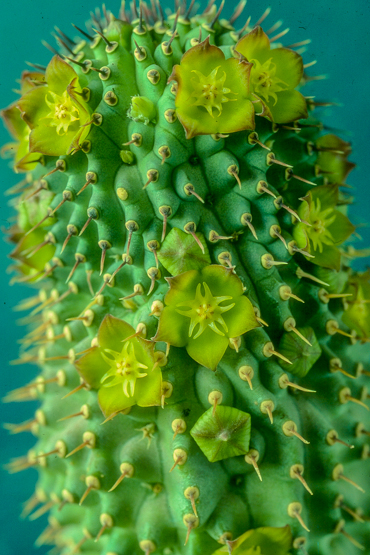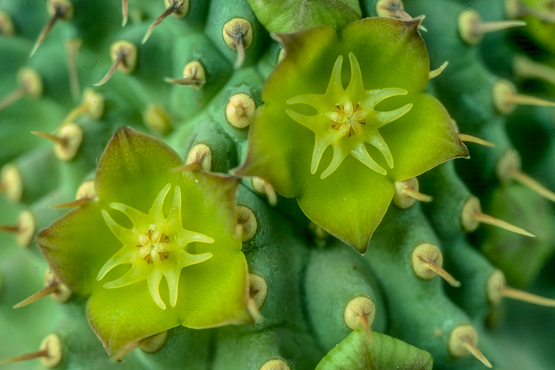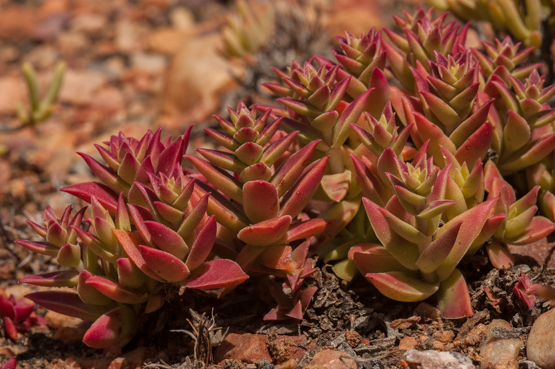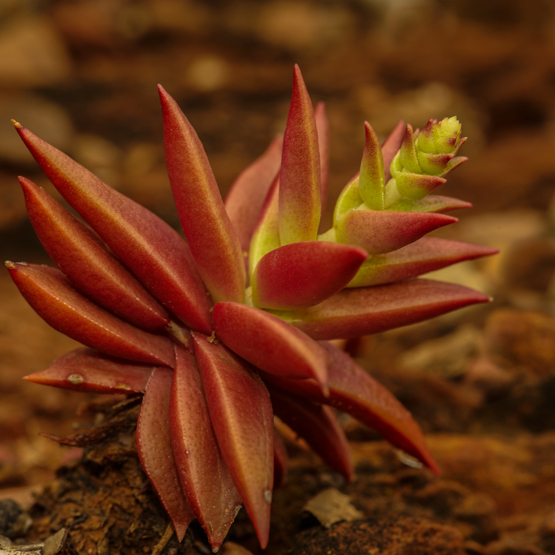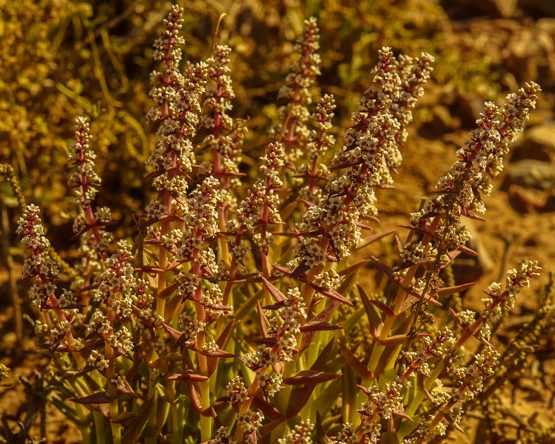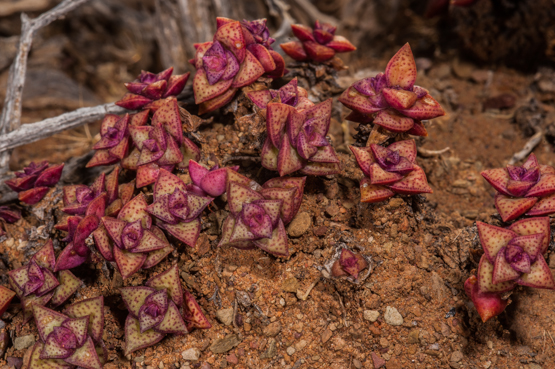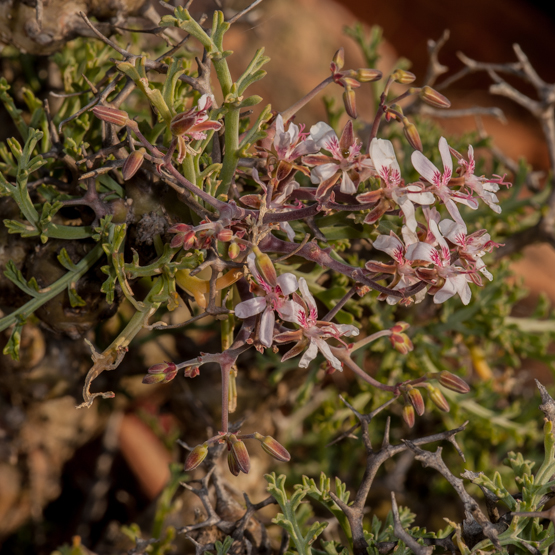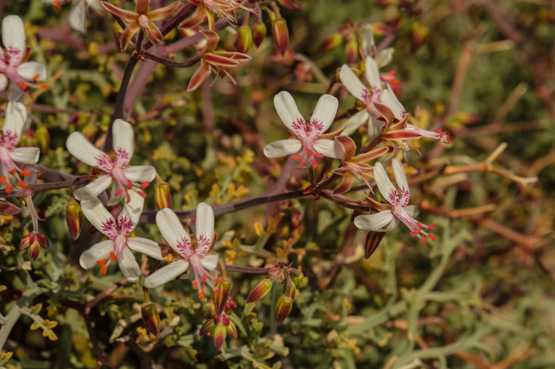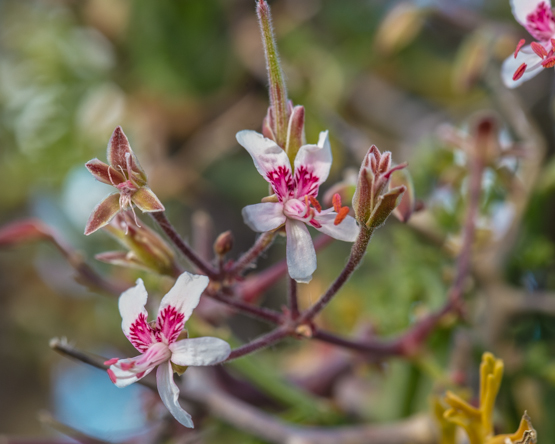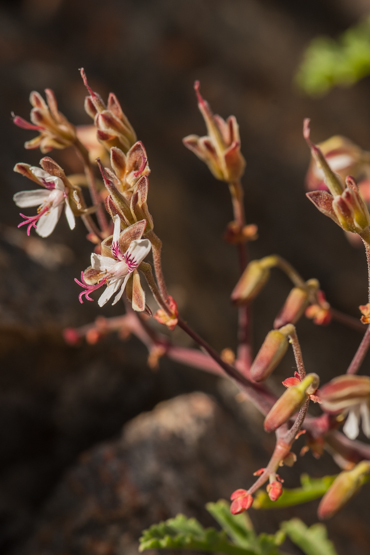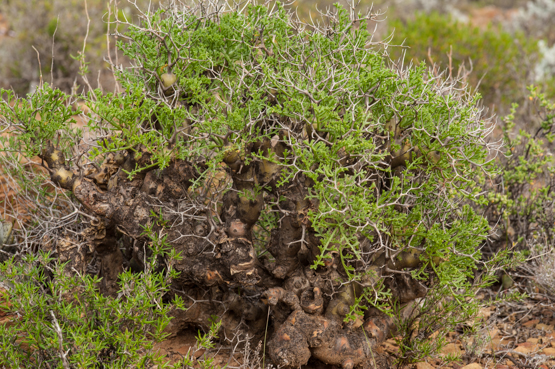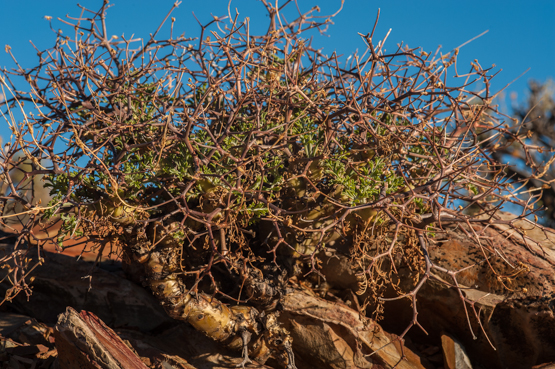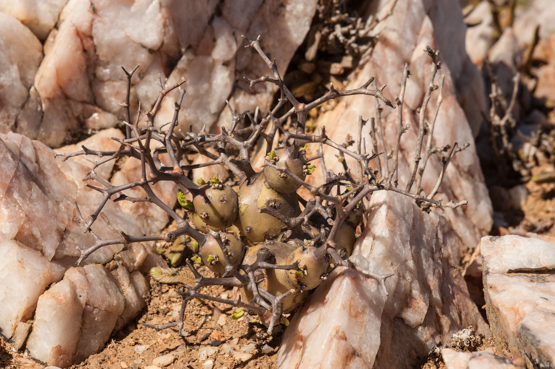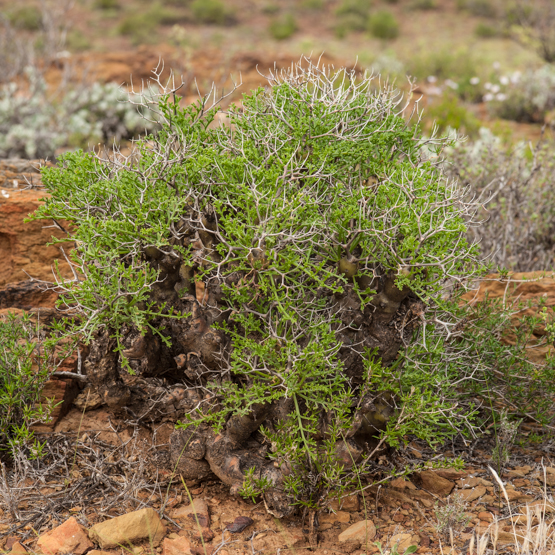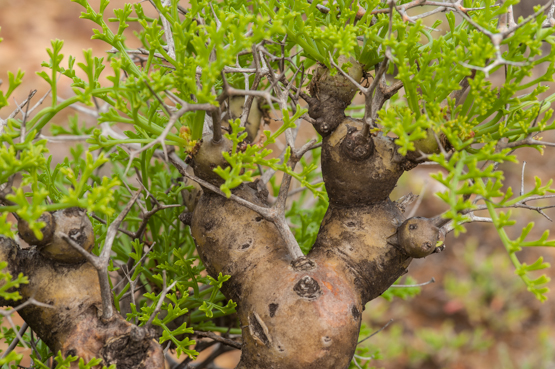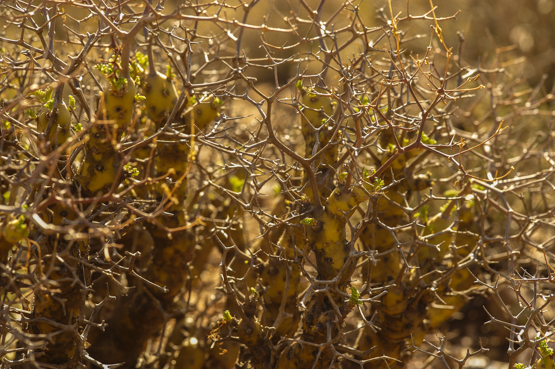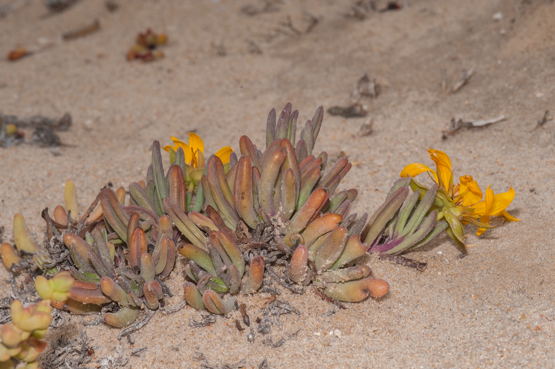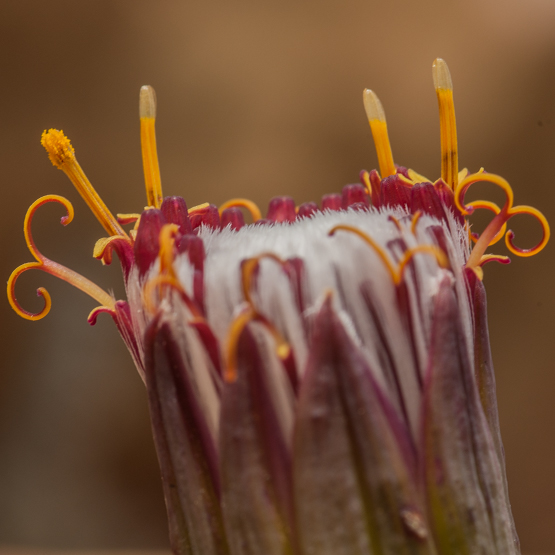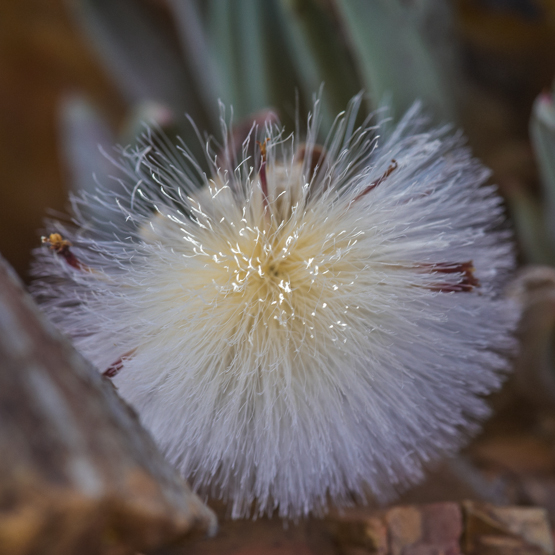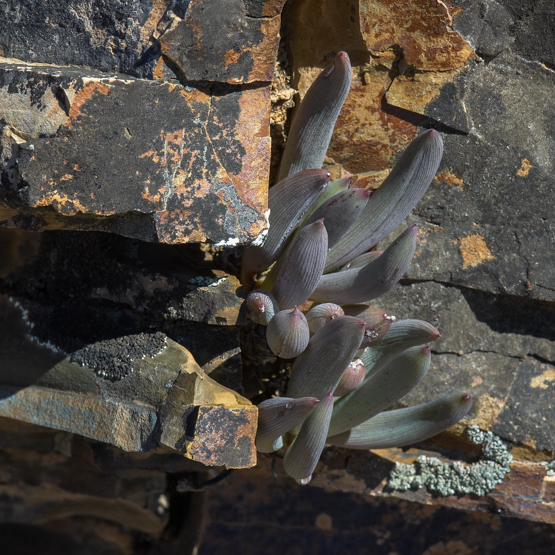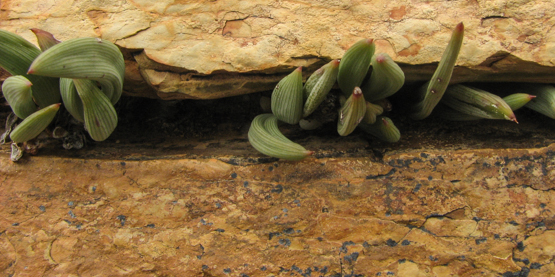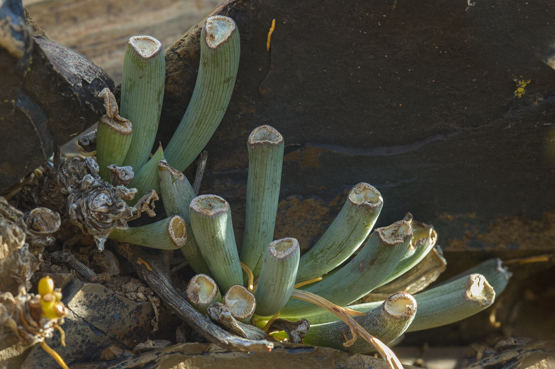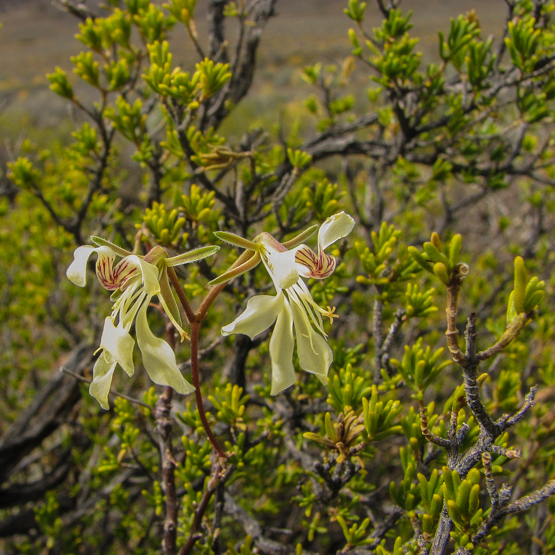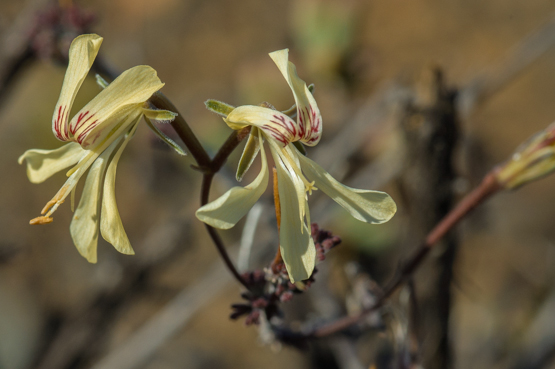Although these plants may reach a height of 50 cm, they are usually much smaller.
They occur in a few places in southern Namibia and around Pofaddder in Bushmanland, but the majority of them are found from Calvinia to Carnavon in the central Great Karoo and southwards as far as Prince Albert and Rietbron. They often grow inside bushes, especially those of spiny Ruschias.
The plants in habitat were photographed south of Pofadder, the other ones in cultivation.
Month: June 2014
Crassula capitella subsp. thyrsiflora
H. R. Toelken in his “Revision of the genus Crassula in southern Africa” calls this the most complex subspecies found in C. capitella, which in turn he refers to as a complex species.
The subspecies is widely distributed in the Eastern and Western Cape provinces, Limpopo and southeastern Namibia.
The white or pink flowers are borne in groups along an elongated inflorescence (up to 40 cm tall) and appear between November and March.
In cultivation one normally sees the form shown in the first four pictures.
The photo below shows plants as they are found in and around the Anysberg Nature reserve. They have beautifully marked leaves which are much shorter then one would expect in subsp. thyrsiflora.
As the reserve is on the western border of the distribution area of subsp. capitella, they may belong there, but I will have to see the flowers before being able to properly identify them.
Pelargonium crithmifolium (3)
Pelargonium crithmifolium (2)
In the preceding post I mentioned the persisting inflorescences that are so characteristic of this species. When you look back at that post you will notice that even young plants produce them.
One cannot help but wonder what purpose these outgrowths serve apart from the obvious one: supporting the flowers and fruits (which could be done with a far less complicated and heavy structure). We have to bear in mind that these plants live in difficult circumstances and cannot afford unnecessary extravagances. In other words, there must be a proper return on investment and the best return would be one that helps the plants to survive.
To my mind, the persisting inflorescence has three functions:
— It keeps browsing predators away.
— It helps shade the plant and thereby lower the temperature.
— The intricate structure of branches diminishes the speed of the usually hot and desiccating wind.
It is interesting that these functions have their strongest influence at the place where they are most helpful: the growing tips of the stems, with their soft and tender young leaves.
More pictures to follow.
Pelargonium crithmifolium (1)
With its thick stems and a height of up to 1 meter, this species is one of the giants among the succulent Pelargoniums. Only P. carnosum is occasionally taller (up to 1.2 m). The species is characterized by its large, much branched inflorescences which become hard and spine-like and will persist for at least a year. The flowers appear from March to November.
The plants occur sporadically from southern Namibia to the western Great Karoo and the Little Karoo on dry, hot flats and slopes, often in crevices of rocky outcrops.
Didelta carnosa var. tomentosa
When we think of succulent members of the enormous Asteraceae (Compositae) family, almost automatically the genus names Othonna and Senecio pop up. Some people will also be acquainted with synomym names like Kleinia, Curio or Notonia, but that is probably it.
Browsing through the Dicotyledons volume of The Illustrated Handbook of Succulent Plants will reveal quite a few more names of genera containing one or more succulent species. One of these is the subject of this post.
Didelta carnosa is the one succulent member of the genus and occurs in southern Namibia and the northern part of South Africa. When flowering it is quite a showy plant, with flower heads up to 9 cm across. In var. tomentosa the leaves -or at least the young ones- have a silvery white woolly cover. The plants grow near to the sea.
(The pictures were taken at McDougall’s Bay, where the plants are accompanied by Fenestraria rhopalophylla ss. aurantiaca, Crassula atropurpurea var. cultriformis and other interesting little succulents).
Senecio acaulis (2)
Senecio (Curio) acaulis. Part 1
These plants may be up to 30 cm tall but are usually much lower.
The leaves are up to 10 cm long and cylindrical (in the dry season they become flattened). Apparently they are tasty to some animals, as one often sees them with the upper half chewed off.
The flowers appear in Oct. Nov. and are large and showy (up to over 2 cm in diameter).
The species occurs on rocky outcrops from the Ceres Karoo to the Kouga Mts.
Pelargonium karooicum
“This species has little horticultural appeal, always looking as if it were more than half dead.”
How about that for a recommendation? It comes from “Pelargoniums of Southern Africa” vol. 3. and yes, if you have space for just one more Pelargonium in your collection, this will not be high on your wants list.
But if you are in the field somewhere between January and April, when very little else is flowering, the white, pale yellow or pink flowers sticking out from a shrub, are a welcome sight.
The plants are shrublets of up to 40 cm tall. with thin, slightly woody stems and parsley-like, somewhat succulent leaves. The species is widely distributed from the vicinity of Kleinzee in Namaqualand to Oudtshoorn in the eastern Little Karoo. This is part of the winter rainfall area, with very hot summers and cool, but mainly frost free winters. Without flowers the plants are difficult to find, as they are always growing within other shrubs.


